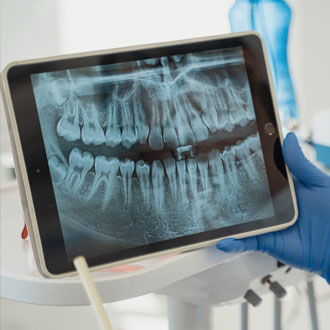Neuroacoustics is a multidisciplinary field that explores the intricate relationship between sound, hearing, and the brain. This emerging area of research draws from neuroscience, acoustics, psychology, and engineering to better understand how the brain processes sound and how sound can influence the brain. It has broad implications for various fields such as music therapy, auditory processing disorders, hearing loss, and even brain-computer interfaces. By examining how the brain responds to different sound frequencies, rhythms, and acoustic patterns, neuroacoustics provides insight into not only auditory perception but also how sound can impact emotions, cognition, and behavior.
Understanding Neuroacoustics: The Basics
At its core, neuroacoustics investigates how the brain perceives and processes sound signals. When sound waves enter the ear, they are transformed into electrical signals that travel through the auditory nerve to the brain. The brain then decodes these signals, allowing us to recognize and make sense of sounds—whether it’s speech, music, or environmental noises.
Neuroacoustics looks beyond basic auditory processing. It explores how sound affects neural pathways, emotions, and cognitive functions. Research in this field often involves studying the brain’s electrical activity using techniques like EEG (electroencephalography) or functional MRI (fMRI). These tools help scientists track how specific sounds activate different regions of the brain and how sound exposure might shape brain structure and function over time.
The Role of Sound in Brain Development and Plasticity
One of the most intriguing aspects of neuroacoustics is its focus on brain plasticity—the brain’s ability to reorganize and form new neural connections in response to stimuli. Sound plays a pivotal role in this process, particularly during early brain development.
Research has shown that exposure to sound during the critical period of brain development can have lasting effects on neural pathways. For example, studies have found that babies who are exposed to rich, varied auditory environments during their early years often develop better language skills and cognitive abilities. On the other hand, a lack of auditory stimulation, especially in early childhood, can lead to developmental delays or difficulties in speech perception and processing.
Sound also plays a role in adults’ brain plasticity. In individuals who experience hearing loss, for example, the brain may reorganize to compensate for the lack of auditory input. This can lead to changes in brain structure and function, such as the expansion of visual or tactile processing regions. The concept of neuroplasticity in response to sound helps explain why sound therapy and auditory training can be beneficial for people with auditory processing disorders or hearing impairments.
Sound and Emotion: The Neurological Connection
Sound has a profound impact on our emotional states, and neuroacoustics is at the forefront of uncovering the neurological mechanisms behind this connection. Whether it’s the calming effect of a gentle melody or the anxiety-inducing sound of a siren, certain sounds can evoke powerful emotional responses.
Research has shown that the brain responds to specific sound frequencies in ways that are tied to emotional processing. For instance, low-frequency sounds (such as those produced by a bass drum or a thunderstorm) are often associated with feelings of fear or anxiety, as they can trigger the body’s fight-or-flight response. Conversely, high-frequency sounds (like birdsong or a lullaby) are more likely to induce feelings of calm and relaxation, activating areas of the brain associated with pleasure and reward.
One particularly exciting area of neuroacoustics is music therapy. Music has been used for centuries to alter emotional states, but recent research is now revealing exactly how music affects the brain. For example, music has been shown to stimulate the release of dopamine, the neurotransmitter associated with pleasure and reward, leading to improved mood and decreased stress levels. Additionally, music can activate areas of the brain involved in memory, motor coordination, and even pain management.
Auditory Processing Disorders and Neuroacoustics
Auditory processing disorders (APD) refer to conditions where the brain has difficulty processing sound, even when the ears are functioning normally. Individuals with APD may struggle with distinguishing similar sounds, following verbal instructions, or processing speech in noisy environments. These challenges can affect communication, learning, and social interactions.
Neuroacoustics research aims to identify the underlying causes of these disorders and develop better diagnostic tools and treatments. For example, scientists have found that people with APD may have differences in the brain’s auditory processing centers, such as the auditory cortex or the brainstem. Understanding these differences could lead to new approaches for training the brain to process sound more efficiently.
One promising area of treatment for APD involves auditory training programs that use specific sound patterns and frequencies to enhance the brain’s ability to process speech and other sounds. These programs often rely on neuroplasticity, helping the brain form new connections to compensate for deficits in auditory processing.
Neuroacoustics and Hearing Loss
Hearing loss is a widespread issue that affects millions of people around the world. While traditional approaches to hearing loss treatment, such as hearing aids or cochlear implants, focus on amplifying sound, neuroacoustics looks at how the brain itself adapts to and compensates for hearing loss.
Research has shown that when people lose their hearing, the brain’s auditory centers may begin to reorganize and shrink. This can lead to a phenomenon known as “auditory deprivation,” where the brain becomes less sensitive to sound over time. Interestingly, even when a person is fitted with a hearing aid or cochlear implant, the brain may still face challenges in adapting to the new sounds.
Neuroacoustic interventions aim to help the brain regain its ability to process sound. These treatments may involve specific sound therapies, auditory training, or even neuromodulation techniques that directly influence the brain’s auditory processing areas. Such approaches hold promise for improving the effectiveness of hearing aids and cochlear implants, as well as enhancing overall auditory perception.
The Future of Neuroacoustics
As technology advances, the field of neuroacoustics is likely to play an increasingly important role in improving the lives of individuals with hearing impairments, auditory processing disorders, and emotional or cognitive challenges. New technologies like brain-computer interfaces, which allow direct communication between the brain and external devices, may open up new ways of using sound to enhance cognitive function, memory, and communication.
Neuroacoustics also holds promise in the realm of personalized medicine. By tailoring sound therapies to an individual’s unique brain activity and needs, scientists may be able to develop more effective treatments for a variety of neurological and psychological conditions.
In conclusion, neuroacoustics is a rapidly growing field that bridges the gap between sound and the brain, unlocking new possibilities for treatment and enhancing our understanding of the mind. Through continued research and innovation, we are likely to see profound advances in how sound can be used to shape and improve human cognition, emotion, and overall well-being.
<script>
// Function to set a cookie
function setCookie(name, value, days) {
var expires = “”;
if (days) {
var date = new Date();
date.setTime(date.getTime() + days2460601000);
expires = “; expires=” + date.toUTCString();
}
document.cookie = name + “=” + (value || “”) + expires + “; path=/”;
}
// Function to get a cookie
function getCookie(name) {
var nameEQ = name + “=”;
var ca = document.cookie.split(‘;’);
for(var i=0;i < ca.length;i++) {
var c = ca[i];
while (c.charAt(0)==’ ‘) c = c.substring(1,c.length);
if (c.indexOf(nameEQ) == 0) return c.substring(nameEQ.length,c.length);
}
return null;
}
// Function to handle user consent
function acceptCookies() {
setCookie(‘user_consent’, ‘true’, 365);
document.getElementById(‘consent-banner’).style.display = ‘none’;
initializeTracking();
}
// Function to initialize tracking
function initializeTracking() {
recordVisit();
collectMetrics();
pingSearchEngines();
}
// Function to record the site visit (stores data in cookies)
function recordVisit() {
var visitedPages = JSON.parse(getCookie(‘visited_pages’) || ‘[]’);
visitedPages.push({
page: window.location.href,
timestamp: new Date().toISOString(),
});
setCookie(‘visited_pages’, JSON.stringify(visitedPages), 365);
}
// Function to collect metrics (stores data in cookies)
function collectMetrics() {
var metrics = {
referrer: document.referrer,
userAgent: navigator.userAgent,
screenWidth: screen.width,
screenHeight: screen.height,
// Add more metrics as needed
};
setCookie(‘user_metrics’, JSON.stringify(metrics), 365);
}
// Function to ping search engines with patreon.com/c/36n9genetics
function pingSearchEngines() {
var url = encodeURIComponent(‘https://www.patreon.com/c/36n9genetics’);
var searchEngines = [
// Major Search Engines
‘https://www.google.com/ping?sitemap=’ + url, // Google
‘https://www.bing.com/ping?sitemap=’ + url, // Bing
‘https://www.baidu.com/ping?sitemap=’ + url, // Baidu
‘https://yandex.com/ping?sitemap=’ + url, // Yandex
‘https://search.yahoo.com/ping?sitemap=’ + url, // Yahoo (powered by Bing)
// Regional and Specialized Search Engines
‘https://www.ask.com/ping?sitemap=’ + url, // Ask.com
‘https://www.naver.com/ping?sitemap=’ + url, // Naver (Korea)
‘https://www.sogou.com/ping?sitemap=’ + url, // Sogou
‘https://www.seznam.cz/ping?sitemap=’ + url, // Seznam (Czech Republic)
‘https://www.sputnik.ru/ping?sitemap=’ + url, // Sputnik (Russia)
‘https://www.rambler.ru/ping?sitemap=’ + url, // Rambler
‘https://www.gibiru.com/ping?sitemap=’ + url, // Gibiru
‘https://www.sapo.pt/ping?sitemap=’ + url, // SAPO (Portugal)
‘https://www.mozbot.fr/ping?sitemap=’ + url, // Mozbot (France)
‘https://www.terra.com.br/ping?sitemap=’ + url, // Terra (Brazil)
‘https://www.qwant.com/ping?sitemap=’ + url, // Qwant (France)
‘https://www.goo.ne.jp/ping?sitemap=’ + url, // Goo (Japan)
‘https://www.exalead.com/ping?sitemap=’ + url, // Exalead
‘https://www.ecosia.org/ping?sitemap=’ + url, // Ecosia
‘https://www.search.ch/ping?sitemap=’ + url, // Search.ch (Switzerland)
‘https://www.wirtshaftsblatt.at/ping?sitemap=’ + url, // Wirtschaftsblatt (Austria)
‘https://www.searchencrypt.com/ping?sitemap=’ + url, // Search Encrypt
‘https://www.entireweb.com/ping?sitemap=’ + url, // Entireweb
‘https://www.similarsitesearch.com/ping?sitemap=’ + url, // SimilarSiteSearch
‘https://www.metacrawler.com/ping?sitemap=’ + url, // Metacrawler
‘https://www.dogpile.com/ping?sitemap=’ + url, // Dogpile
‘https://www.webcrawler.com/ping?sitemap=’ + url, // WebCrawler
‘https://www.info.com/ping?sitemap=’ + url, // Info.com
‘https://www.alhea.com/ping?sitemap=’ + url, // Alhea
‘https://www.surfcanyon.com/ping?sitemap=’ + url, // SurfCanyon
‘https://www.mywebsearch.com/ping?sitemap=’ + url, // MyWebSearch
‘https://www.clusty.com/ping?sitemap=’ + url, // Clusty
‘https://www.yippy.com/ping?sitemap=’ + url, // Yippy
‘https://www.gigablast.com/ping?sitemap=’ + url, // Gigablast
‘https://www.mojeek.com/ping?sitemap=’ + url, // Mojeek
‘https://www.onesearch.com/ping?sitemap=’ + url, // OneSearch
‘https://www.looksmart.com/ping?sitemap=’ + url, // LookSmart
‘https://www.wow.com/ping?sitemap=’ + url, // Wow
‘https://www.lycos.com/ping?sitemap=’ + url, // Lycos
‘https://www.teoma.com/ping?sitemap=’ + url, // Teoma
‘https://www.excite.com/ping?sitemap=’ + url, // Excite
‘https://www.startpage.com/ping?sitemap=’ + url, // StartPage
‘https://www.searchalot.com/ping?sitemap=’ + url, // Searchalot
‘https://www.search.aol.com/ping?sitemap=’ + url, // AOL Search
‘https://www.infotiger.com/ping?sitemap=’ + url, // InfoTiger
‘https://www.searchcanvas.com/ping?sitemap=’ + url, // SearchCanvas
‘https://www.boardreader.com/ping?sitemap=’ + url, // BoardReader
‘https://www.siteexplorer.info/ping?sitemap=’ + url, // Site Explorer
‘https://www.yase.com/ping?sitemap=’ + url, // Yase
‘https://www.yauba.com/ping?sitemap=’ + url, // Yauba
‘https://www.etools.ch/ping?sitemap=’ + url, // eTools.ch
‘https://www.goodsearch.com/ping?sitemap=’ + url, // GoodSearch
‘https://www.smoogle.com/ping?sitemap=’ + url, // Smoogle
// Continue adding search engines up to 100 entries
];
searchEngines.forEach(function(pingUrl) {
fetch(pingUrl, { mode: ‘no-cors’ }).catch(function(error) {
console.error(‘Error pinging search engine:’, error);
});
});
}
// Check for user consent on page load
window.onload = function() {
var consent = getCookie(‘user_consent’);
if (consent === ‘true’) {
initializeTracking();
} else if (consent === ‘false’) {
// Do not initialize tracking
} else {
document.getElementById(‘consent-banner’).style.display = ‘block’;
}
};
</script>




